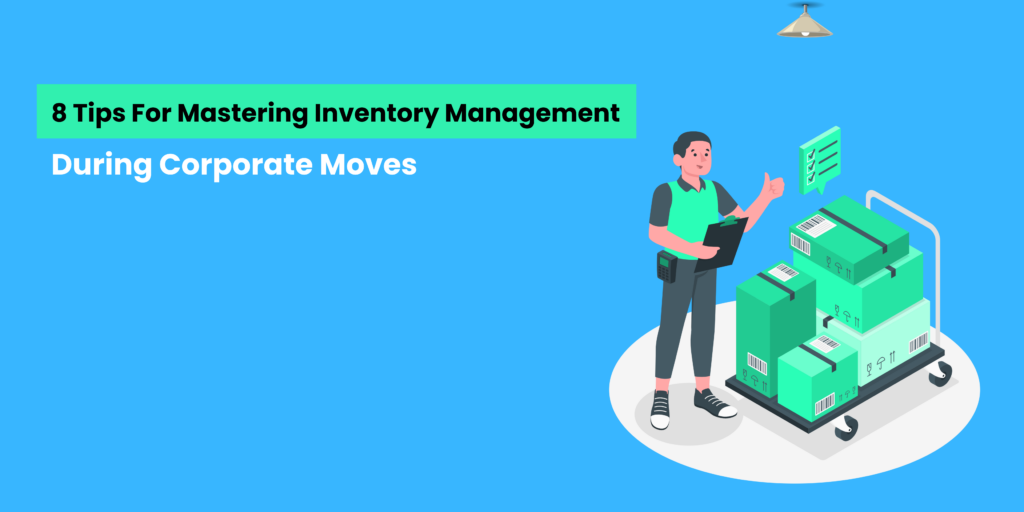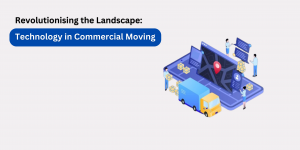Relocating a business can be an exciting and challenging endeavor. Whether you’re moving to a new office space, expanding to a larger facility, or restructuring your operations, managing your inventory during the transition is crucial. It’s a complex task, but mastering inventory control during business relocations is essential to ensuring the process goes smoothly and your business remains profitable. In this comprehensive guide, we’ll explore the best practices and strategies to help you maintain effective inventory management during moves.
The Significance of Inventory Management During Moves
Inventory management during moves may not be the first thing that comes to mind when planning a business relocation, but it’s a critical aspect that can significantly impact your company’s success. When your inventory is well organized and accounted for during the transition, you can-
1. Minimize Downtime
Efficiently managing inventory ensures that you can continue operations with minimal disruptions, reducing downtime and the associated revenue loss.
2. Prevent Loss and Damage
Proper handling of inventory during moves can help prevent loss, damage, or theft of valuable items, saving you from financial setbacks.
3. Reduce Costs
Effective inventory management can lead to cost savings in terms of labor, storage, and transportation during the relocation.
4. Enhance Customer Satisfaction
Maintaining inventory control ensures that you can fulfill customer orders and meet demands without delays, preserving your reputation.
5. Meet Legal and Regulatory Requirements
Compliance with inventory regulations is essential, and neglecting this aspect during a move can lead to legal troubles.
6. Streamline Operations
The insights gained from efficient inventory control can help streamline your operations in the new location, improving overall efficiency.
We now know how crucial inventory management is to business relocations, so let’s look at some tactics and best practices to help you handle this important part of the process.
Inventory Management Best Practices for Business Relocations
1. Conduct a comprehensive Inventory Audit
Before packing a single box, it’s essential to have a complete and accurate inventory count. An inventory audit involves reviewing and documenting all your existing stock, ensuring that you know exactly what you have on hand. Here’s how to go about it:
Categorize Items: Divide your inventory into categories, such as perishable, non-perishable, fragile, or valuable items. This categorization helps you prioritize and handle them accordingly during the move.
Use Inventory Management Software: If you aren’t already using inventory management software, now is the time to invest in a system that can help automate the tracking and reporting of inventory. Software can streamline the auditing process and minimize human error.
Conduct Physical Counts: Perform physical counts of your inventory. Ensure that all products are accurately labeled and organized for easy counting. Assign experienced staff to this task to minimize errors.
Document the condition: Make a note of the condition of the items, especially if any are already damaged or expired. This information is crucial for insurance claims or when deciding whether to keep or dispose of specific items.
Double-Check the Audit: After the initial audit, perform a second check to verify the accuracy of your counts. Discrepancies should be addressed before the move begins
2. Develop a Relocation Inventory Plan
Once you have an accurate inventory count, it’s time to create a relocation inventory plan. This plan should outline how you will handle your inventory during the move and consider factors such as transportation, storage, and the timeline of the relocation. Here’s what to include:
Prioritize Inventory: Identify which items are essential for your immediate operations and prioritize their relocation. These might include products that are in high demand or items crucial for fulfilling pending orders.
Choose the Right Storage: Determine whether you’ll need temporary storage during the move. If so, select a storage facility that can accommodate your inventory’s size and specific requirements, such as climate control for perishable items.
Select Transportation Methods: Decide on the mode of transportation for your inventory. If you have a mix of perishable and non-perishable items, consider separate transportation for each type to ensure optimal conditions.
Timeline and Milestones: Create a timeline that outlines key milestones for the move, including inventory packing, transportation, unloading, and restocking. Assign responsibilities to staff members to ensure a coordinated effort.
Emergency Plan: Prepare for unexpected situations. Have a contingency plan in case of delays, accidents, or other emergencies that may affect your inventory. This plan should include alternative transportation options and storage solutions.
3. Efficiently Pack And Label Inventory
Proper packing and labeling are crucial for maintaining control over your inventory during a business relocation. Follow these steps to ensure a smooth packing process:
Use Quality Packing Materials: Invest in high-quality packing materials to protect your inventory. This includes labels, packing tape, bubble wrap, and sturdy boxes. Fragile items require extra cushioning and attention.
Label Each Item: Label every box or container with a description of its contents, its destination (e.g., new office location, storage facility), and any handling instructions. A barcode system can be invaluable for easy tracking.
Prioritize Safety: Ensure that hazardous or dangerous materials are properly labeled and transported in accordance with relevant safety regulations.
Keep an Inventory Log: Maintain a detailed inventory log as you pack. This log should match the labels on your boxes and containers and be updated throughout the relocation process.
FIFO and LIFO Principles: Implement the First-In, First-Out (FIFO) and Last-In, First-Out (LIFO) principles for perishable goods, depending on your inventory’s nature. This helps minimize waste and ensure freshness.
4. Implement Tight Security Measures
Security is paramount when relocating your inventory. Implementing robust security measures can safeguard your assets and prevent losses.
Access Control: Limit access to your inventory during the move. Only authorized personnel should be allowed to handle or move items. Use access cards, locks, and surveillance cameras if necessary.
Insurance Coverage: Ensure that your inventory is adequately insured for potential damage or loss during the relocation. Verify that your insurance policies cover the move and that your coverage is up-to-date.
Inventory Counts at Each Stage: Conduct inventory counts at various stages of the relocation process. These counts should include loading, unloading, and storage. Any discrepancies should be immediately addressed.
Background checks: If you’re hiring moving companies or temporary staff, conduct background checks to ensure the people handling your inventory are trustworthy and reputable.
5. Monitor And Track Inventory in Real-Time
Real-time tracking is a powerful tool for inventory control during business relocations. By knowing the exact location and condition of your inventory at all times, you can quickly respond to any issues that may arise. Consider the following tracking methods:
RFID Technology: Radio-frequency identification (RFID) tags can be affixed to your inventory, allowing for real-time tracking. RFID technology is highly accurate and efficient for managing inventory during moves.
Barcoding: Use a barcode system to track and manage your inventory. Scanning barcodes is a simple and cost-effective way to maintain control.
GPS Tracking: If you have multiple shipments or vehicles, GPS tracking can provide real-time location information. This is especially useful for ensuring timely deliveries and reducing the risk of theft.
Cloud-Based Inventory Management: Utilize cloud-based inventory management systems that offer real-time updates accessible from any location. This enables you to monitor inventory even when you’re not on-site.
6. Employee Training and Communication
Your employees play a crucial role in maintaining inventory control during a business relocation. Training and clear communication are vital for ensuring that everyone understands their responsibilities and follows best practices. Here’s what to consider:
Training Workshops: Provide training workshops for staff members who will be involved in the relocation. This should cover proper packing, labeling, and handling of inventory.
Responsibility Assignments: Clearly define roles and responsibilities for each team member involved in the move. Assign a team leader or coordinator to oversee the process.
Communication Channels: Establish efficient communication channels so that staff can report any issues or concerns during the relocation. Encourage an open dialogue and address any problems promptly.
Frequent Updates: Provide regular updates to your team regarding the progress of the relocation. Keeping everyone informed ensures that everyone is on the same page and can respond to changes as needed.
7. Reconcile Inventory Upon Arrival
Once your inventory reaches its new destination, the work is not over. It’s essential to reconcile your inventory to ensure that everything arrives in the expected condition and quantity. Follow these steps:
Unpacking and Verification: Carefully unpack your inventory and verify that each item matches your inventory log and labels. Pay particular attention to fragile or high-value items.
Damage Assessment: If any items are damaged during the move, document the damage and take photographs if necessary. Insurance claims require this documentation.
Storage Placement: If you’re using a storage facility, ensure that your inventory is placed in the correct locations, so items are easily accessible when needed.
Update Inventory Management Software: Record any changes in your inventory management software. This ensures that your system reflects the current status of your inventory.
Re-evaluate Storage Needs: Review your storage needs and make adjustments as necessary. Items that were previously stored may need to be relocated to the main business location for easy access.
8. Regularly Review and Improve Your Inventory Management
Inventory management doesn’t end once the move is complete. Continuous improvement is essential for long-term success. Regularly review your inventory control practices and look for ways to enhance efficiency and reduce costs.
Data Analysis: Analyze the data collected during the move to identify areas where improvements can be made. This could include optimizing storage space, improving transportation methods, or enhancing security measures.
Feedback and Suggestions: Encourage feedback from employees involved in the relocation process. They could have insightful knowledge about things that require development.
Adapt to Change: As your business grows or changes, your inventory management needs may evolve. Be prepared to adapt and update your inventory control strategies accordingly.
Stay Informed: Keep up to date with industry best practices and technology. New tools and software may become available to help streamline inventory control.
Conclusion
In conclusion, mastering inventory management during moves is a fundamental factor in safeguarding the success and continuity of your operations. By diligently implementing the best practices discussed, you can confidently navigate the challenges of relocation. Effective inventory management not only minimizes disruptions and losses but also sets the stage for a seamless transition, ultimately fostering your business’s long-term growth and prosperity.



